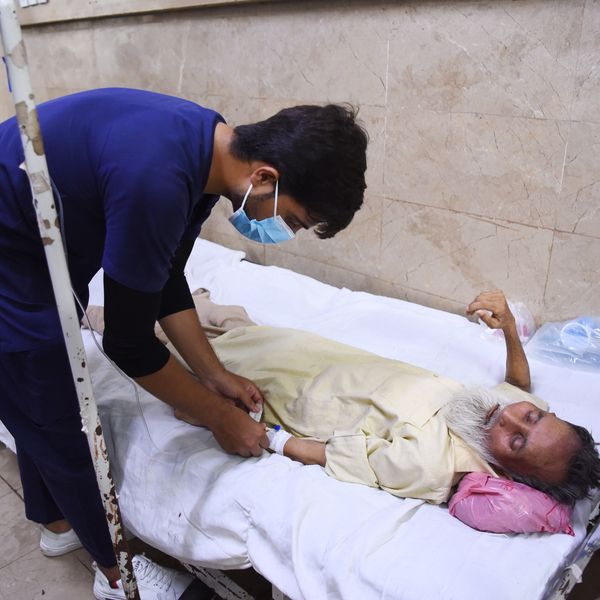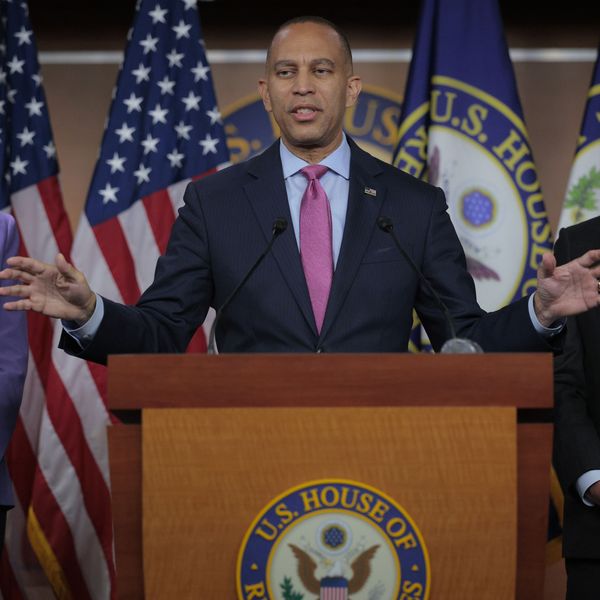The deathtoll related to an ongoing and "unprecedented" heatwave in India has soared to nearly 1,200 people, according to the nation's health ministry on Wednesday, with no respite for hundreds of millions of people expected until at least the weekend.
According to officials quoted in the Hindustan Times, most of the victims have been construction workers, the elderly or the homeless. In regions across the subcontinent this week, temperatures have sweltered populations with thermometers pushing towards 50degC (or 122degF) and high levels of humidity stifling air quality. In response, India's Meteorological Department has issued what are called "red box" warnings for various states where the maximum temperatures are expected to remain above 45degC.
"This year, the heatwave condition is unprecedented and there has been a large number of deaths. The Health Ministry is likely to come up with an advisory soon for all the states and common people," a senior health Ministry official told the Press Trust of India (PTI).
As Pakistan Today reports, conditions may well get worse before they better:
Roads have melted in New Delhi, where forecasters said they expected the high temperatures to continue into next week -- adding to the misery of thousands living on the capital's streets with little shelter from the hot sun.
"Maximum temperatures won't fall substantially. However, major relief can be expected from June 2 as there are indications of good showers," [a local forecaster] said.
Hospitals in the worst-affected states were on alert to treat victims of heatstroke and authorities advised people to stay indoors and drink plenty of water.
Hundreds of people -- mainly from the poorest sections of society -- die at the height of summer every year across the country, while tens of thousands suffer power cuts from an overburdened electricity grid.
Authorities in the worst-hit state of Andhra Pradesh in southern India, where nearly 900 people have died since May 18, called for emergency water distribution areas to be set up.
As with ongoing flooding in Texas and Oklahoma in the United States this week, the extreme heat in India has been attributed to the convergence of seasonal weather patterns beset by the El Nino in the Pacific Ocean and the overall impact of increased global temperatures due to human-caused climate change. According to the International Business Times:
Experts say an El Nino, which leads to a warming of sea-surface temperatures in the Pacific, triggers scorching weather across Asia.
However, even without an El Nino the global warming in the last few decades has potential for damage.
"On account of 0.8 degree warming during the past hundred years, one must expect more heat waves even without an El Nino. El Nino will increase the atmospheric temperature and hence add to the problems created by global warming," J Srinivasan, chairman, Divecha Centre for Climate Change at Indian Institute of Science told IBTimes UK.
Additionally, as the Times of India reported earlier this week, a recent study by the Germany-based Potsdam Institute for Climate Impact Research warned that specific areas India, including highly-populated urban enclaves like Hyderabad, can expect more hot days in the future thanks to the global warming.
If you think the heat wave this year is the worst, prepare for tougher times ahead. Hyderabad is likely to get hotter in the next few years, with the average number of severe heatwave days increasing.
Generally the city suffers a maximum of five heatwave days' in a year. According to experts, this number will go up to as many as 40 days per year in the future. [...]
A heat wave' day is when the temperature is five degrees Celsius or more than the average temperature recorded on that particular day over the last three decades. For example, the temperature recorded on Saturday was 43.6 degrees Celsius against a normal maximum temperature of 39.5 degrees Celsius recorded on the same day in the last few years. According to the Met officials, this is five degrees Celsius more than the normal temperature.


